10 Types of Black Birds In South Dakota (with Pictures)
Last Updated on
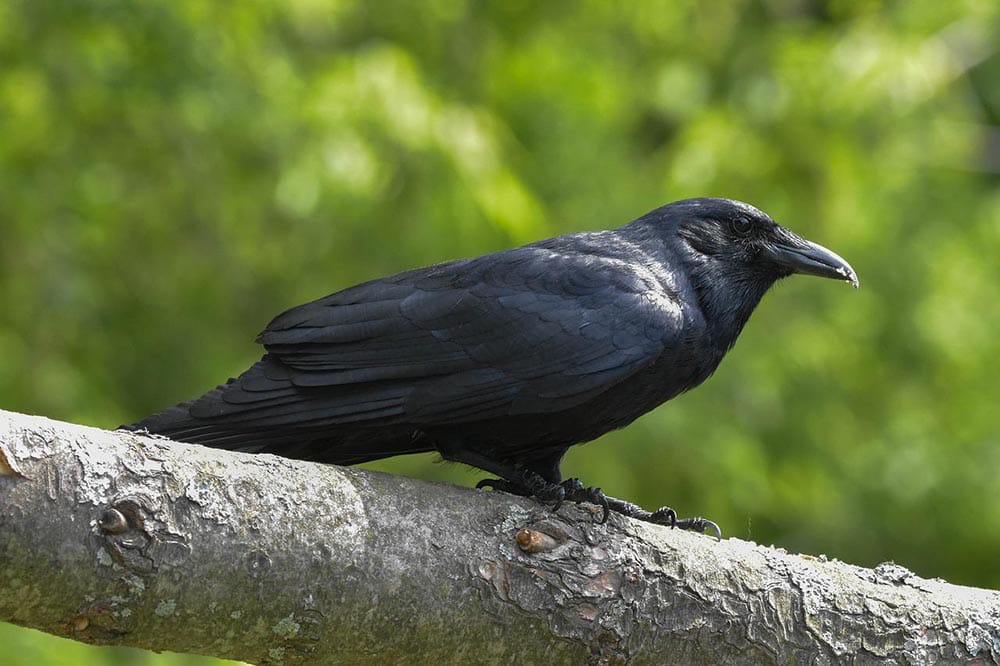
There are around 438 different bird species that call South Dakota home.1 Some of them are very common and popular (for example, the American Robin), while others are fairly rare (like the Bell’s Vireo). Many different birds have found this state suitable for their propagation and survival, seeing as it comes with diverse topography.
Among those species, there’s a wide array of black birds. Read on below to find out more.

10 South Dakota Black Birds
1. Red-Winged Blackbirds
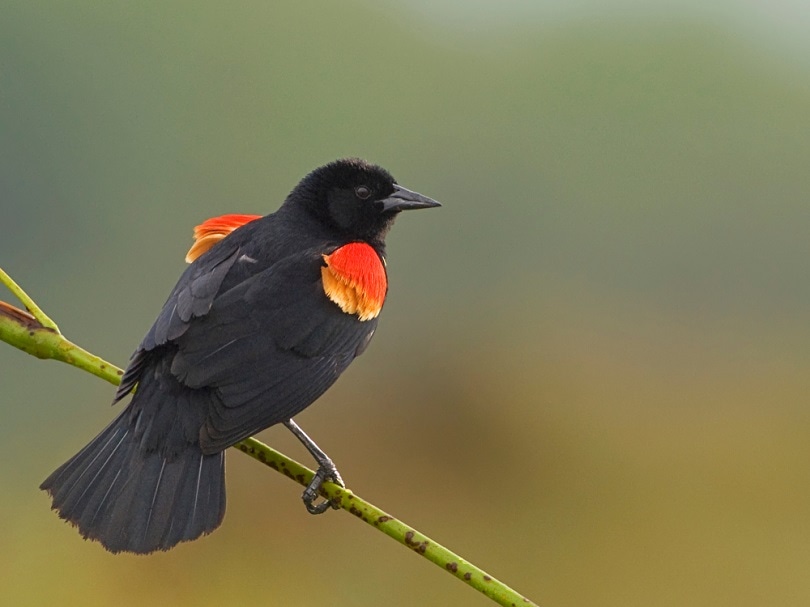
| Weight: | 1.1 – 2.7 oz (32 – 77 g) |
| Length: | 6.7 – 9.1 in (17 – 23 cm) |
| Wingspan: | 12.2 – 15.8 in (31 – 40 cm) |
The Red-Winged black bird is the most spotted species in the summer and winter. Even though some of them like to migrate to warmer regions when the temperatures start dropping, the few that remain are always a great source of entertainment.
You don’t have to be an expert in the avian world to be able to identify this bird. Its principal descriptive traits are literally in its name—“Red-Winged.” The plumage is primarily black, with reddish-orange patches on the shoulders. The males mostly look like they are wearing dark suits, but the females have streaks of brown coloring.
It’s not a good idea to approach a male species, as they are known to fiercely protect their territories. Especially if you live close to some field of meadow, where they like to build their nesting homes. The females usually lay two to four eggs, and then incubate them for close to 2 weeks. She’ll feed them insects and seeds for another 2 weeks before they fledge.
2. Common Grackle

| Weight: | 2.6 – 5.0 oz (74 – 142 g) |
| Length: | 11.0 – 13.4 in (28 – 34 cm) |
| Wingspan: | 14.2 – 18.1 in (36 – 46 cm) |
This species is very rare in several other parts of the country, and that’s why it’s considered near-threatened. Grackle populations are slowly dwindling due to several factors. Deforestation being one of them.
The best time to spot a Common Grackle is during summer. They spend most of their summer here, as they find the conditions suitable for breeding. A clutch will have two to seven eggs, which often take close to 14 days to hatch. The young ones will be taken care of and fed seeds by the parent for another 2 weeks.
These birds aren’t that picky when it comes to their preferred habitats. You’ll find them hanging out in different agricultural fields, at the park, in open woodlands, etc. They aren’t picky eaters, either. We’ve seen them digging into garbage, devouring crops, hunting grasshoppers, spiders, beetles, caterpillars, and several other invertebrates.
3. European Starling
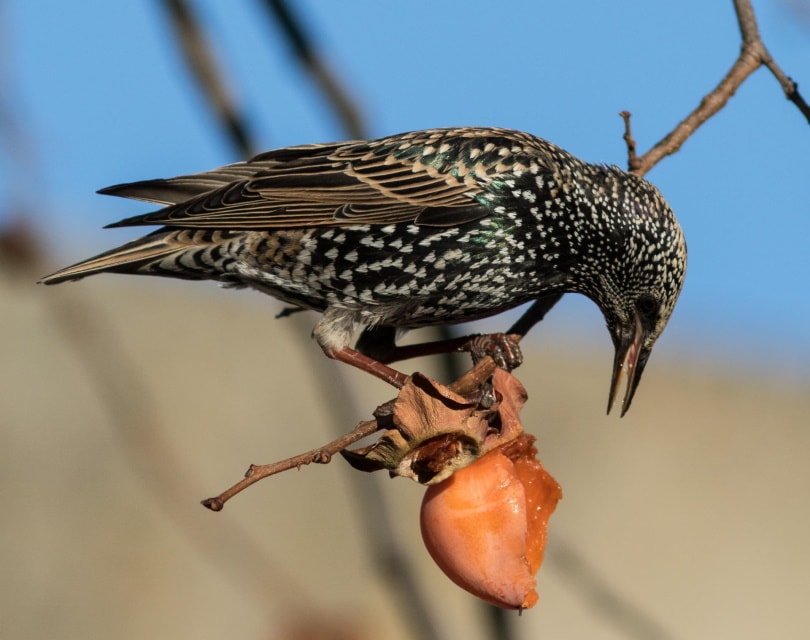
| Weight: | 2.1 – 3.4 oz (60 – 96 g) |
| Length: | 7.9 – 9.1 in (20 – 23 cm) |
| Wingspan: | 12.2 – 15.8 in (31 – 40 cm) |
The European Starling didn’t migrate to this state. They were introduced by some Europeans who really loved the works of William Shakespeare. Nonetheless, we’re grateful because we got the chance to meet an incredibly beautiful species. This stocky species has an iridescent plumage that sometimes looks blue, green, or purple.
They are now found everywhere in North America, save for Alaska and in the northern regions of Canada—this could be due to the fact that those two areas always experience freezing temperatures.
The Starling diet is often rich in protein. If they have to eat vitamins or other minerals, they forage for seeds and grains. Their diets purely consist of spiders, millipedes, grasshoppers, flies, earthworms, bugs—you name them.
Inviting the European Starling to your yard could be a mistake if you already have other species around. It’s an aggressive bird, as it likes to bully smaller species. In addition, they usually hang out in flocks that tend to be very noisy.
4. Brown-Headed Cowbird

| Weight: | 1.5 – 1.8 oz (42 – 50 g) |
| Length: | 7.5 – 8.7 in (19 – 22 cm) |
| Wingspan: | 14.2 in (36 cm) |
The Brown-Headed Cowbird is a partial nomad. Some sources prefer using the phrase “a partially migratory species” since not all members of a community migrate to other parts of the country in search of greener pastures.
We call them “Brown-Headed” for obvious reasons. The males have black plumage, with a light brown head. Not the females, though. As they have taken on a gray-brown plumage, with an unevenly distributed streaking. They all love foraging next to grazing animals, as this gives them easy access to the food being kicked up.
This Cowbird species is insectivorous to some degree, but its stable food consists of grass and weed seeds. There will be times when you’ll find the female eating eggs, to draw calcium from the shells.
They normally lay their eggs in other birds’ nests, hence the reason why they are dubbed “brood parasites.” This has always resulted in negative effects on other species, and even reduces the chances of their eggs developing.
5. Yellow-Headed Blackbird
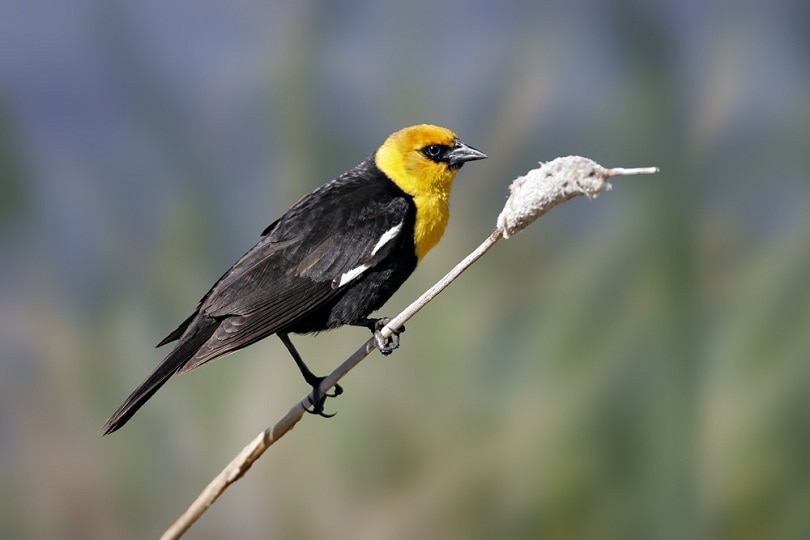
| Weight: | 1.6 – 3.5 oz (44 – 100 g) |
| Length: | 8.3 – 10.2 in (21 – 26 cm) |
| Wingspan: | 16.5 – 17.3 in (42 – 44 cm) |
The Yellow-Headed species is just as beautiful as their cousins the Red-Winged Blackbirds. In terms of colorations, the males are very different from their spouses. They have black plumages, yellow heads, and a few patches of white on the chest and wings. The females, on the other hand, are brown-bodied. Their heads are also yellow, but not as bright as that of their male counterparts.
If you’d like to see the Yellow-Headed bird doing its thing, visit their natural habitats during summer. We’re told they often breed in the prairie wetlands, and for some reason, prefer nesting in reeds. During that period, they mostly feed on insects. The grains and seeds are reserved for winter when the conditions are too harsh for insects to roam around.
The female Yellow-Headed Blackbird will lay two to five eggs per season. They take 13 to 15 days to hatch, and approximately 2 weeks to become fully fledged. Unlike some species, their hatchlings are just as gorgeous looking as the parents.
6. Bobolink

| Weight: | 1.0 – 2.0 oz (29 – 56 g) |
| Length: | 5.9 – 8.3 in (15 – 21 cm) |
| Wingspan: | 10.6 in (27 cm) |
Bobolinks only show up during summer, and disappear the minute the freezing temperatures set in. We don’t think you’ll have trouble identifying the males, seeing as they are so unusual looking. They look like they have hair on their heads. To be precise—yellow hair.
The females and juveniles look different from the males, with stripes covering their crown, natural dark eyeliners, and dark-brown backs and flanks.
The Bobolink species is well-adapted to flying. They are South American natives, and only fly to the US or Canada when it’s time to breed. It is estimated that a breeding pair covers approximately 12,000 miles¹ during migration. They are drawn to open grasslands, so if you’d like to observe or study their behavior, head over there.
As of now, estimates of the breeding population of this species stand between 1.8 and 2.2 million¹. They actually used to be more than that before they started feeling the impact of climate change. The North American Breeding Bird Survey did some research and found that the cumulative decline since 1966 is approximately 56%¹.
7. Brewer’s Blackbird
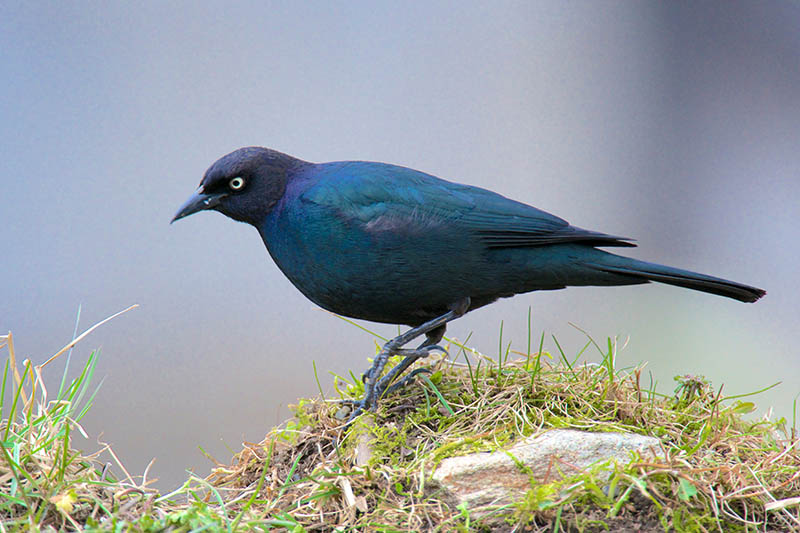
| Weight: | 2.1 – 3.0 oz (60 – 86 g) |
| Length: | 8.3 – 9.8 in (21 – 25 cm) |
| Wingspan: | 4.8 – 5.2 in (121 – 133 mm) |
The Brewers have built homes in all US states, and not just South Dakota. During winter, you’ll find a few members of their community migrating to Canada, while the rest are left behind to survive on what’s available. These medium-sized birds can be found in a wide variety of habitats, and that’s why we are not usually surprised when we bump into one while relaxing in the park or at the coast.
They mainly feed on seeds, but snack on insects from time to time. Take it from us when we say that luring a brewer to your yard is easy. Just install a ground feeder and fill it with cracked corn or sunflower seeds. And if you want them to build nests closer to your house, provide them with the essential building materials including soft dry grass, spider webs, twigs, and mud.
Identifying the Brewer is quite easy, as they always make a “chuk” call. If you’re not familiar with that sound, and you’d still wish to identify them, just focus on their physical characteristics. The males have very dark but glossy plumage, while that of the females is plain brown.
8. Rusty Blackbird
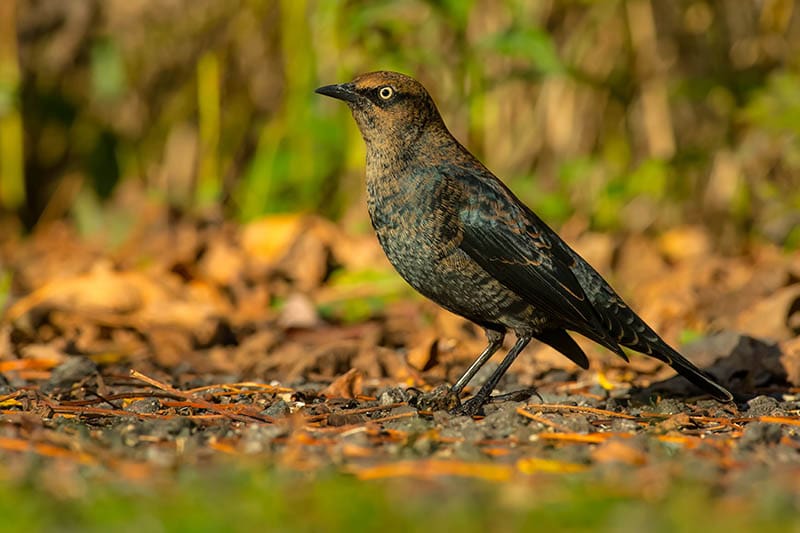
| Weight: | 1.7 – 2.8 oz (47 – 80 g) |
| Length: | 8.3 – 9.8 in (21 – 25 cm) |
| Wingspan: | 14.6 in (37 cm) |
This species has been red-listed by the International Union for Conservation of Nature as “vulnerable.” This means that as per the Migratory Bird Treaty Act, you can be punished if you’re caught transporting, trading, selling, capturing, or even killing it, without prior authorization. An authorization that can only be granted by the Department of Interior U.S. Fish and Wildlife Service.
The best time to spot one is during spring or fall when they are busy migrating. It’s easy to distinguish the males from the females since they normally grow a very dark but glossy summer plumage. Their spouses have grayish-brown plumages, and a dark color circling their eyes. This species was named “Rusty” because they grow some rusty-looking feathers during the cold season.
9. Great-Tailed Grackle

| Weight: | 3.7 – 6.7 oz (105 – 190 g) |
| Length: | 15.0 – 18.1 in (38 – 46 cm) |
| Wingspan: | 18.9 – 22.8 in (48 – 58 cm) |
The Great-Tailed Grackle is not a common species in South Dakota. They’ll appear occasionally, in various urban settlements or near agricultural fields. They exhibit a higher degree of sexual dimorphism, as males tend to be 50% to 60% heavier than females. Their tapered tails are also unusually long, and the primary color of their plumage is black.
The females are just as slender as their partners but come in a dark brown plumage. Their bellies are lighter brown, and the tail appears to be relatively leaner.
Great-Tailed Grackles are granivores. That being said, they won’t mind hunting or being served some slugs, worms, insects, or arachnids.
They are talented architects when it comes to nest-building. Firstly, they’ll scout the area and choose a spot that’s very high up a tree. Next, they’ll gather construction materials, including soft grass, mud, cow dung, webs, twigs, and even weeds. The male will then guard the site, while the female does what she does best. That whole process usually takes 5 to 17 days.
When the nest is ready, the female will start laying eggs. A single clutch has one to five eggs, but the number of broods per season depends on the conditions. Sometimes they produce two broods in a single breeding season.
10. American Crow
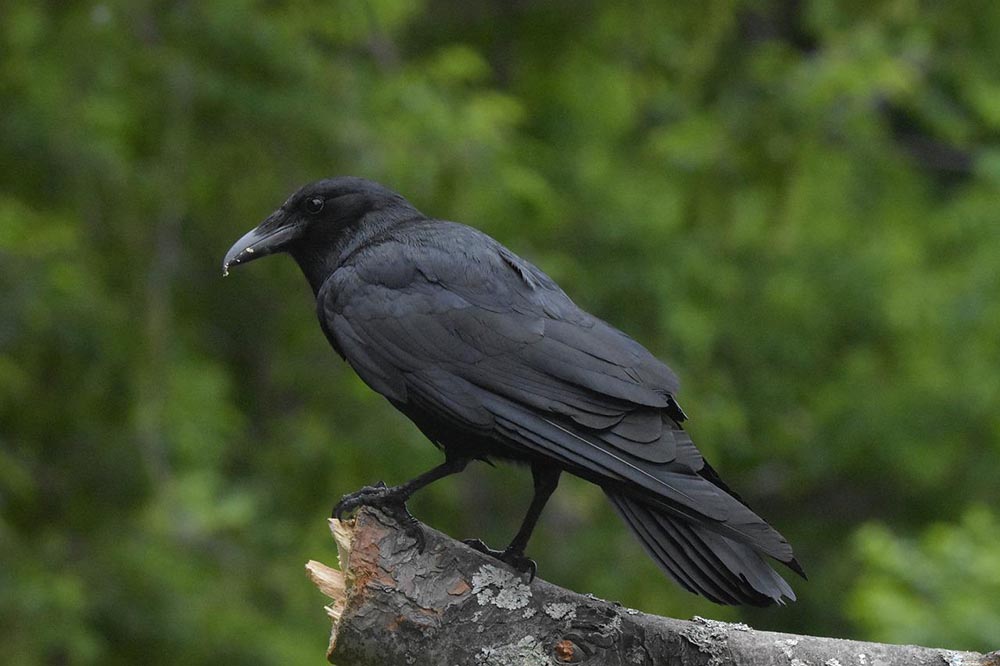
| Weight: | 11.2 – 21.9 oz (316 – 620 g) |
| Length: | 15.8 – 20.9 in (40 – 53 cm) |
| Wingspan: | 33.5 – 39.4 in (85 – 100 cm) |
The American Crow can be found anywhere in this state. As a matter of fact, we’re pretty sure you’ll be able to spot one in a tree right now if you look hard enough. These birds can become a nuisance if you’re not used to their calls.
With regards to the diet, they’ll feed on virtually anything. They’ll eat your fruits, crops, garbage, berries, grains, seeds, etc. If you don’t serve them anything, they’ll go ahead and hunt some frogs, snails, nestlings, and insects.
This bird’s population is so large and widespread that when you go get a license to hunt them, they don’t often cap the daily or possession limit. And you can shoot them anytime, as the shooting hours are unrestricted as well.
All the breeding pairs in this community have helpers. The main task of the helper is to take care of the female’s needs and help protect the nest. The nests are always built by both sexes, 10 to 70 inches above the ground, at the base of a wide tree branch. The materials are bark strips, cow dung, sometimes mud, twigs, sticks, plant fibers, weeds, feathers, and grass.
You should know the American Crow is one of the most intelligent birds in our ecosystems. That could be the reason why despite our numerous attempts to get rid of them, they still find a way to adapt and survive.

How To Attract Black Blacks In South Dakota
- Providing water all year round: Birds are like humans. After a long day at work, all we can think of is how to get home and take a cool bath. Foraging for food is the same as working when it comes to birds. And once they are done, they’ll need to clean themselves before the sun sets. Just don’t forget to change the water every 2 to 3 days.
- Plant native plants: Diversify if you can. Don’t just plant berries and forget about the grains or seeds. Try and create a plant ecosystem that appeals to even the pickiest eaters.
- Avoid using insecticides: The insects that you’re trying to kill are the reason you’re receiving visitors every morning and late in the evening. Without them, the birds won’t be able to access meals that are rich in protein or fats. And these are essential nutrients, as they are required for the growth and development of their hatchlings.
- Place some dead trees around: The trees will attract more insects and offer cavity-dwelling for species that are willing to build homes around your yard. Also, they usually act as shelter from harsh weather elements.
- Install feeders: Food scarcity is the main reason why many of these birds keep on migrating during winter. So, if you want your feathery friends to stay, install some feeders, and fill them with some of their favorite seeds.

Final Thoughts
South Dakota is also known as the “Land of Infinite Variety” because it’s a diverse state. And the variety is reflected in everything, including the topography and bird species. These 10 species are just representatives of a larger community. If you wish to learn more about the remaining 400+ species, let us know in the comments below.
Featured Image Credit: JackBulmer, Pixabay
Table of Contents
About the Author Robert Sparks
Robert’s obsession with all things optical started early in life, when his optician father would bring home prototypes for Robert to play with. Nowadays, Robert is dedicated to helping others find the right optics for their needs. His hobbies include astronomy, astrophysics, and model building. Originally from Newark, NJ, he resides in Santa Fe, New Mexico, where the nighttime skies are filled with glittering stars.
Related Articles:
Monocular vs Telescope: Differences Explained (With Pictures)
How to Choose Binoculars for Bird Watching: 10 Expert Tips
10 Types of Hummingbirds in Arkansas (With Pictures)
8 Types of Hummingbirds in Nebraska (With Pictures)
5 Types of Hummingbirds in Idaho (With Pictures)
3 Types of Hummingbirds in Mississippi (With Pictures)
8 Types of Hummingbirds in Kansas (With Pictures)
5 Types of Hummingbirds in West Virginia (With Pictures)
